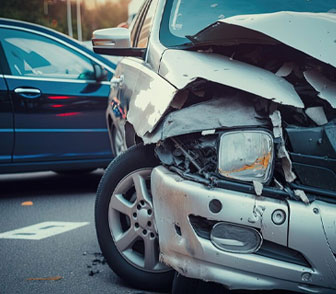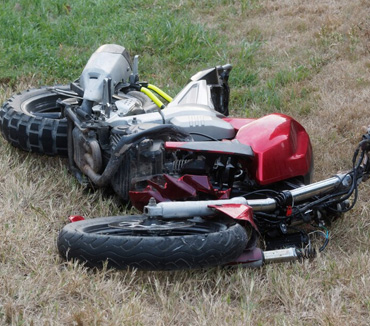Rancho Cucamonga Personal Injury Lawyer
Rancho Cucamonga Personal Injury Attorney
Experiencing a personal injury incident can be life-changing and devastating. It can be hard to understand what legal options you may be eligible for as you are navigating the aftermath of the incident. A local Rancho Cucamonga personal injury lawyer can help you understand and craft a path forward that elevates your health and well-being. You can focus on recovering fully while your attorney works tirelessly to seek justice on your behalf.
At Duque & Price, our personal injury attorneys are dedicated to providing tangible support for our clients through legal knowledge and action. Our firm has worked to secure clients full settlements in all types of claims, from construction site injuries to motor vehicle accidents and premises liability. We have experience with a wide spectrum of personal injury incidents and injuries, and we are prepared to step in and help meet your unique needs.

What Is Personal Injury Law?
Personal injury law is often referred to as tort law. This term refers to the legal framework that allows individuals to seek justice in the event that they sustained an injury caused by the negligent, intentional, or accidental action of another party. Through the law, injured individuals can seek compensation for their financial, emotional, and physical losses by pursuing a legal claim and proving fault. Personal injury law covers the following types of accidents:
- Motor Vehicle Accidents
- Wrongful Death
- Premises Liability
- Medical Malpractice
- Workplace Incidents
- Product Liability
- Dog Bites and Animal Attacks
- Defamation
The scope of personal injury law is wide-reaching and seeks to offer legal protection to individuals and parties who are deserving of its help. At Duque & Price, we have a team of dedicated personal injury attorneys who have supported clients seeking a variety of settlement amounts and have fought vigorously in each case. We work to prove fault in personal injury claims and will not rest until our client’s story has been heard.
Why Is Fault Important in Personal Injury Claims?
Fault is an important aspect of each personal injury claim in Rancho Cucamonga. The plaintiff is attempting to prove that the defendant caused the incident that led to their injury in order to seek compensation for their damages. A common way to prove fault is to establish that the defendant owed the plaintiff a duty of care and that they failed to uphold their duty in some way, which led to their injury and damages.
A duty of care in personal injury law is understood as a legal obligation a responsible party holds to prevent harm to others through reasonable action. A helpful way to understand this is through the lens of medical malpractice. A health care provider owes their patient a duty of care to perform their job and duties to a reasonable level of skill and care and make decisions that another medical provider would reasonably make in the same situation.
If the medical provider fails to perform to a reasonable level, they have breached their duty of care. If this were to lead to injury or damages to their patient, they may be held responsible and at fault for their patient’s related injury.
In the case of a landlord and a tenant, a landlord holds a duty of care to their tenant to keep the property safe and operable to a reasonable level. If the landlord fails to do this and their client sustains an injury due to the unsafe nature of the property, the landlord has breached their duty of care to their tenant and can be held responsible for their tenant’s injury and damages.
Fault is an essential component of every personal injury claim, and it is the job of a personal injury attorney to carry out an investigation to produce evidence that supports the connection between the defendant’s breached duty of care and the plaintiff’s injury and damages.
How Can a Personal Injury Attorney Help
The role of a personal injury attorney in a claim is essential for many reasons. Their support provides a competitive edge and a fair and just trial. By leveraging their experience and detailed understanding of local laws and regulations that impact personal injury, they can develop methods and strategies that solidify their clients’ cases. Below are specific ways in which an attorney is an indispensable legal advocate:
- Initial Assessment and Evaluation: In an initial meeting with their client, an attorney is able to provide a detailed assessment of the legal merits of their claim, spend time learning the details of the case, and determine whether or not the client and attorney would work well together. During this meeting, the attorney can provide initial estimates of the timeline and the cost of the legal claim. They can also start determining a figure that their client can pursue in damage recovery.
- Case Management and Administration: Throughout the process of the case, an attorney will provide essential administrative and case management duties, such as filling out essential documentation, filing documentation and motions, handling details, communication, and more. With this support, the client can focus more time and energy on recovery.
- Strategic Planning and Legal Comprehension: An attorney holds a thorough understanding of local laws and regulations that impact their client’s claim, and through this knowledge, they will form a solid legal strategy that uplifts their client’s rights and experience. They will employ the law to support and protect their client.
- Negotiation and Litigation Representation: Through negotiations, the attorney will negotiate skillfully for their clients, not settling for any offers from the at-fault party that do not adequately compensate their client for their losses. If the negotiations are unsuccessful and the case moves to litigation, the attorney will employ their legal strategy in the courtroom in front of the judge and jury.
- Advocacy: Throughout the entire process, an attorney will act as a trusted advocate for their client. Any questions or concerns the client may have can be directed at the attorney, and they will work their hardest to ensure their client is always informed and supported.
What to Do After a Personal Injury Accident
The moments following a personal injury incident are essential and can impact an injured individual in many ways. Below are suggestions on how to respond to a personal injury in order to protect yourself in the moment and in the future.
- Check for Injury and Move to a Safe Location: After an accident, it is vital to check yourself and other parties for injury. If you are in a dangerous area, move to a safe location if possible. In the case of a car accident on a busy highway, try to move to the shoulder to prevent further accidents from occurring.
- Contact Emergency Help: Contact emergency medical assistance if there are any injuries. If you are injured, your health is the primary priority, so it is essential to seek treatment immediately. Contact local law enforcement if there have been any injuries or damages. A police report is an essential piece of evidence should you choose to pursue a claim, so ensure a report is filed.
- Exchange Contact Information: Exchange contact information with all affected parties. This includes information like names, phone numbers, insurance information, and any other necessary details. If there were eyewitnesses of the accident, gather their contact information, as their account of the accident could be vital in a legal claim.
- Document the Accident Scene: Photos, videos, or detailed written descriptions of the accident scene can be helpful pieces of evidence in an investigation. If you are safe and able, document the accident scene.
- Contact Insurance Provider: Immediately following an accident, reach out to an insurance provider as soon as possible. Insurance companies often have time restrictions to access their support, so ensure swift contact to avoid the loss of coverage.
- Speak With a Personal Injury Attorney: Contact a local personal injury attorney to explore your legal options. An attorney can assist you in conversations with insurance, determine if you have legal merits to pursue a claim, advocate for your rights, and more.
Rancho Cucamonga Personal Injury Statistics
While Rancho Cucamonga is considered a reasonably safe city to live and visit, and accident percentages tend to remain low, it is still important to understand previous accident rates and injuries to work toward prevention in the future.
Rancho Cucamonga is located in San Bernardino County, where 1,785 personal injury/property damage/wrongful death cases related to motor vehicles were filed during the 2020-21 fiscal year. That same year, 904 of these cases unrelated to motor vehicles were filed.
In 2021, over 400 individuals were killed or injured because of a vehicle accident in the city. While this figure seems high, it is low when compared to other cities of the same size.
Out of the 433 injuries or deaths in 2021, 15% of the accident victims were pedestrians or cyclists, and 6% were motorcyclists. The most common cause of death in California in 2021 was heart disease. Other frequent causes of death include cancer, Covid-19, and preventable injuries that result in death.
Common Personal Injury Types
There are many types of injuries that individuals can sustain from a personal injury accident, ranging from minor to major. Common injuries include the following:
- Neck Injury: Neck injuries often happen due to whiplash. Whiplash is a common injury in car accidents, as it happens when a victim’s head is violently jerked from side to side or up and down. The symptoms of whiplash vary and can include lower back pain, blurred vision, neck and shoulder pain, and more. A neck injury is not always immediately detected, making it essential to consult with emergency medical care following an accident.
- Spinal Cord Injury: Injury to the spinal cord is one of the most serious types of injuries, and it can lead to permanent damage. The symptoms of a spinal cord injury include loss of feeling, change in sensation, sharp pain, and more.
- Broken Bones: While broken bones are a common injury in personal injury accidents, they will likely result in less compensation than catastrophic accidents like spinal cord injuries. This is because a broken bone can heal in a matter of months.
- Burns: Burn injuries can create tissue damage and, if serious enough, cause death. These types of injuries can often be catastrophic. One type of case that may result in burns is a car accident.
- Traumatic Brain Injuries: Traumatic brain injuries affect brain function and lead to chronic health issues. These types of injuries can result from car, truck, pedestrian, and motorcycle accidents. They could also happen due to falls.
Average Personal Injury Settlement Amounts in Rancho Cucamonga
If you have recently endured a personal injury, it is natural to want to understand how much compensation you may receive in damage recovery should you pursue a legal claim. While there are various online resources that offer average settlement amounts, relying on these figures for your planning may do more harm than good. Each case brings unique and individual factors that significantly impact settlement levels.
Factors that contribute to determining settlement amounts can include the following:
- Economic Damages: Economic damages include the monetary losses that an individual has endured or plans to endure in the future. For example, this can include medical bills, lost wages, lost earning capacity, repair amounts, and other out-of-pocket expenses.
- Non-Economic Damages: Non-economic damages include all losses where a specific monetary value is not automatically understood or agreed upon, such as pain and suffering, emotional distress, loss of companionship, loss of enjoyment of life, humiliation, and more.
- Punitive Damages: Punitive damages are typically for personal injury claims where the injury was caused intentionally by the defendant. In this case, the defendant is ordered to pay an amount on top of the economic and non-economic damages to cover their egregious behavior.
There are other factors to consider when it comes to an overall settlement amount, such as lawyer payment, court fees, documentation processing fees, insurance policy limits, the financial status of the at-fault party, and more.
FAQs
Q: How Much Can You Sue for in Personal Injury In California?
A: The amount that you can sue for personal injury in California is directly associated with the expenses an individual has accrued from their total related injuries and damages. Each personal injury case is unique and requires a different amount, as individual injuries, damages, and life impacts are contingent on the specific factors of each case. Even if two personal injury cases have similar injuries and damages, the final settlement amount can be vastly different.
Q: What Is a Personal Injury in California?
A: A personal injury in California is any injury or damage that was caused by another party’s negligence, recklessness, or intentional action. Personal injuries can happen due to a number of incidents, such as car accidents, medical malpractice, dog bites, animal injuries, premises liability, and more. Personal injury victims can pursue a claim as they seek justice and recovery for their injuries and damages.
Q: How Are Personal Injury Settlements Calculated in California?
A: Personal injury settlements are calculated in California by determining the measurable damage the injured individual has suffered. This includes looking into economic factors, such as medical expenses and lost wages, as well as non-economic factors, such as pain and suffering, emotional distress, and more. Through a detailed investigation, a monetary value that covers the extent of the damage and the loss the plaintiff has endured is determined.
Q: What Is the Success Fee for Personal Injury Cases?
A: The success fee in personal injury is the amount an attorney will receive in payment for their services if their client’s case is successful in retrieving a settlement. Some attorneys operate with a contingency fee agreement, where they do not charge their clients a fee for their support unless they are successful in negotiations and/or litigation. If their case is successful, they will receive a percentage of the full settlement or compensation amount their client won.
Q: How Long Does It Take to Resolve a Personal Injury Claim in California?
A: The length of time it takes to resolve a personal injury claim in California can be highly variable. The timeline of a personal injury claim is determined by the case’s complexity, including the severity of injuries, the efficiency of each party involved, court availability, processing times, and more.
Contact a Rancho Cucamonga Personal Injury Lawyer Today
In the unfortunate event that you have suffered a form of personal injury and believe the cause was another party’s intention, negligent, or reckless actions, you may have the grounds to pursue a legal claim. At Duque & Price, our personal injury attorneys value the opportunity to hear your story, and we want the chance to create a detailed legal strategy that can help elevate your experience in pursuing a fair settlement.
Contact our office today to set up a consultation and learn how we can support you and advocate for your rights today. We can provide a thorough case evaluation and assessment that determines your eligibility to pursue a claim. You deserve persistent and determined legal advocates as you seek recovery, health, and future security. Allow us to be your legal guide and support throughout the process.
Request A
Free Consultation
Fields Marked With An ” *” Are Required










